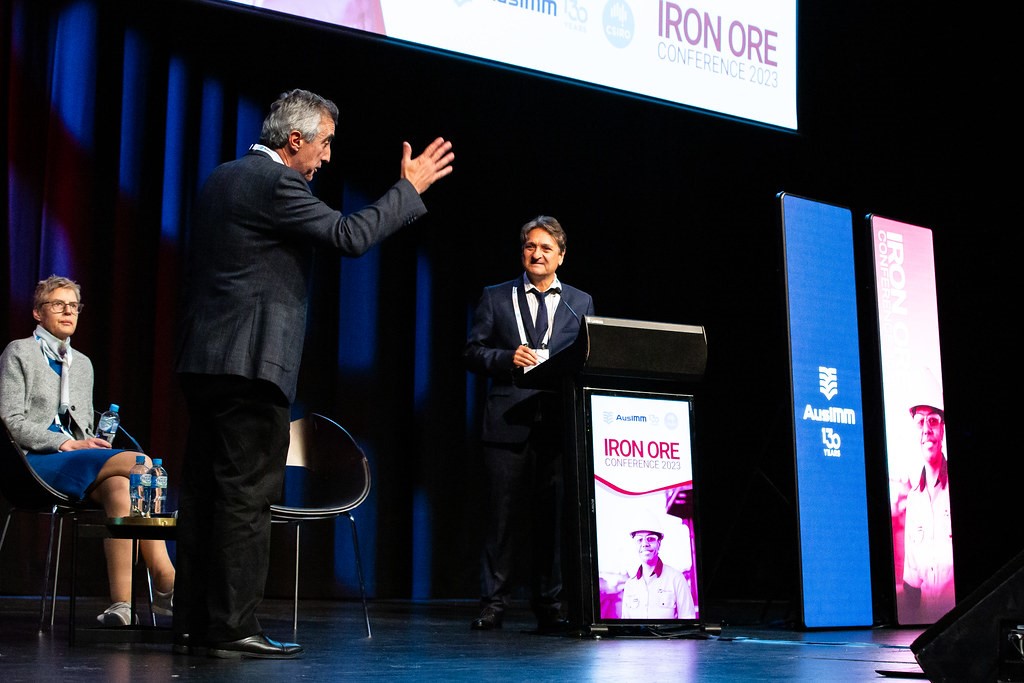October 10, 2023
Keynote at Iron Ore Conference 2023
Co-hosts AusIMM and CSIRO, brought together 600+ delegates from across Australia and the world to Perth last week for the latest edition of the long-running Iron Ore Conference 2023.
This conference brings together geologists, engineers, metallurgists, academia, mining leaders, and executives to address the challenges of iron ore across the mining value chain.
In 2023, the conference theme was ‘Transitioning to a green future’. Presentations and some exhibits focussed on addressing the decarbonisation of the iron and steel supply chain, automated technologies, and to showcasing leading best practices.
Given the theme, Hub Director Dr Paul Zulli was invited to deliver a keynote on bespoke technological solutions for lowering emissions of capital-intensive steel plants. He also participated in an Expert Panel session dealing with “Pilbara Green Iron and Steel”, focussed on Western Australian iron ores.
In this keynote, and panel discussion, Paul spoke about decarbonisation technologies for steel production being at various stages of technical as well as commercial readiness. Essentially, there are two overarching pathways for decarbonisation: Smart Carbon Usage, involving the capture or better utilisation of carbon within or external to the steel plant (“circular economy” principles); and Direct Carbon Avoidance, essentially via the use of renewable energy, materials and/or hydrogen.
The overarching point though was that the adoption of new, disruptive technologies across capital-intensive, steel plants would depend on various key factors including locality, available raw materials and energy sources, and market-driven requirements. The timing of investments is crucial so inevitably, bespoke technological solutions will be chosen for each steel plant.
Throughout his address, Paul addressed a number of key issues and questions:
- What combination of technologies best suits a specific region or company, and how do we go about assessing this?
- What processes are or will be available to replace the traditional blast furnace-basic oxygen route?
- Can we more effectively reuse carbon-containing internal and external material streams?
- What steps are required for a greater level of sector coupling i.e. for cost-effective, renewable sources of electricity to steel manufacturing?
The steel sector cannot solve these issues independently and cross-sector engagement will be required across the value chain e.g. with ferrous materials and power generation sectors.
In conclusion, Paul referred to the Australian steel industry as unique – it is not large, but neither is it small. More importantly, the technological solutions for steel decarbonisation in Australia will likely be different to elsewhere in the world and as such, bespoke solutions would be required and found.
